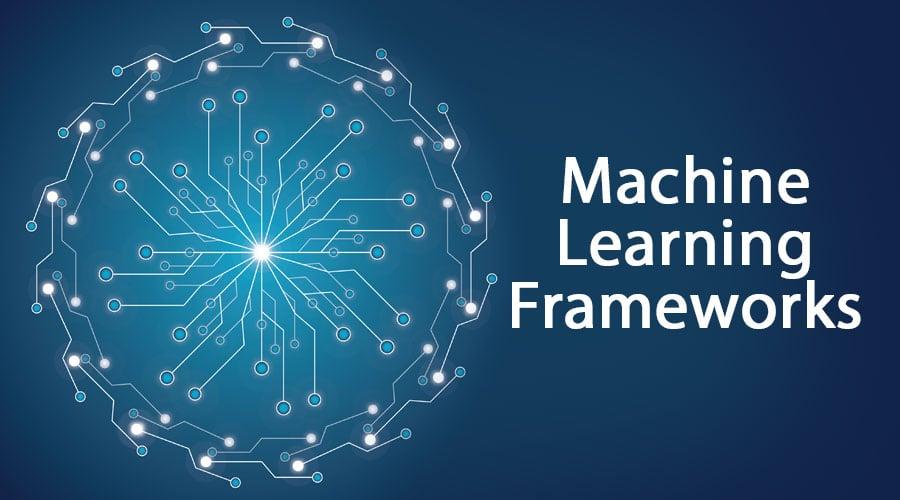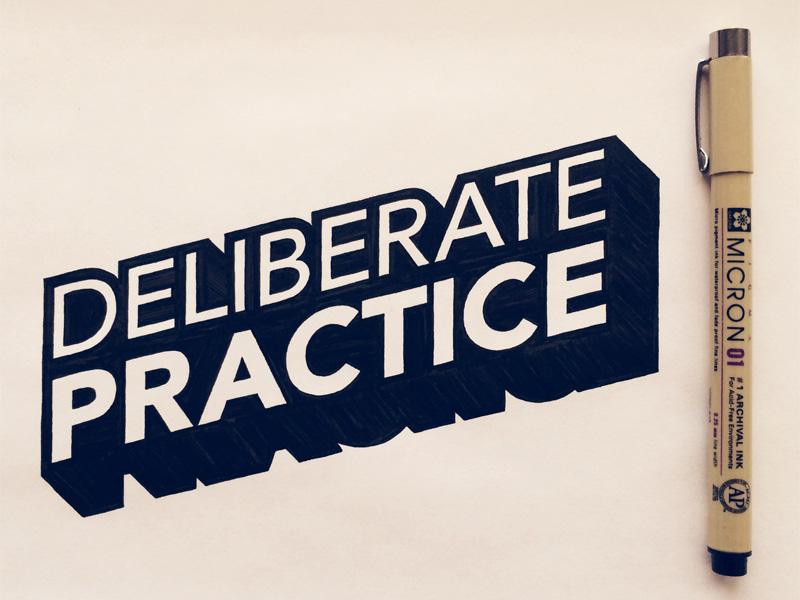Section 1 - F: Frame the Problem (Clarify Before You Solve)
If you ask senior ML interviewers at Google, Meta, or Anthropic what differentiates the top 5 % of candidates from everyone else, most will give a version of the same answer:
“They don’t rush to solve the question; they first make sure they’re solving the right one.”
That’s the essence of the first step in the FRAME Framework: Frame the Problem.
a. Why Framing Matters More Than Ever
Modern ML interviews are intentionally underspecified.
You might be told, “Design a model to detect fraudulent transactions,” or “Predict churn for a subscription product.”
There’s usually ambiguity baked in, no dataset details, no constraints, no metrics.
The interviewer isn’t trying to trick you; they’re testing whether you can clarify ambiguity, a daily reality in ML jobs.
In real projects, requirements rarely come perfectly defined. Data might be incomplete, objectives unclear, and trade-offs unstated.
Engineers who jump straight into modeling waste weeks optimizing the wrong thing.
Framing early shows you think like a systems engineer, not a Kaggle competitor.
It’s the single most powerful way to project confidence and competence in the first 30 seconds of an answer.
Check out Interview Node’s guide “How to Approach Ambiguous ML Problems in Interviews: A Framework for Reasoning”
b. The Goal of Framing
Your goal in this step is simple:
✅ Understand the objective,
✅ Define the scope,
✅ Surface constraints, and
✅ Align on success metrics.
Framing converts a vague prompt into a solvable engineering problem.
For example:
Prompt: “Design a recommendation engine for an e-commerce site.”
A candidate who skips framing might start describing matrix-factorization models.
A candidate who frames first might say:
“Before diving in, can I clarify a few points? Are we optimizing for click-through rate, revenue, or user engagement? What’s our latency tolerance? And do we have user-item interaction data, or only implicit signals like page views?”
Those 20 seconds demonstrate:
- Awareness of business context.
- Technical precision (data + metrics + constraints).
- Composure under pressure.
Most importantly, it makes the interviewer your collaborator, not your examiner.
c. The Framing Checklist
When you hear a question, pause and quickly run through this mental checklist:
| Category | What to Ask | Why It Matters |
|---|---|---|
| Objective | “What’s the primary goal—accuracy, speed, interpretability, or business impact?” | Clarifies success metric |
| Data | “What kind of data is available? Structured, text, images?” | Determines modeling space |
| Scale | “How large is the dataset and how frequently does it update?” | Affects system design |
| Constraints | “Any latency or compute limits?” | Shows practicality |
| Evaluation | “How will we measure success?” | Aligns with business goals |
Even if the interviewer doesn’t know all answers, they’ll appreciate your discipline.
It signals that you’ve been on real ML projects where missing these clarifications can derail timelines.
d. Language That Projects Composure
When you frame, tone matters.
Avoid sounding hesitant (“I guess maybe we could ask…”).
Instead, use confident scaffolding phrases:
- “To ensure I’m approaching this correctly, I’d like to clarify …”
- “Before I proceed, may I confirm the objective?”
- “There are a few key factors I’d want to align on first.”
These phrases turn nerves into control.
They make you sound like a consultant diagnosing a problem, not a student taking a test.
e. How Framing Fits Across Interview Types
| Interview Type | How Framing Helps |
|---|---|
| Coding | Clarify input/output, edge cases, and expected complexity before coding. |
| ML Design | Align on objective (e.g., precision vs recall). |
| System Design | Set scale assumptions early (10 K vs 10 M requests per sec). |
| Behavioral | Frame the situation before describing actions → context clarity. |
In every round, framing buys you time and structure.
It also subtly forces interviewers to slow down to your pace, giving you cognitive control.
f. Example: Meta ML Design Round
Question: “Design an ML system to flag inappropriate content on Instagram.”
Unstructured answer: “I’d use a CNN fine-tuned on labeled images…”
Structured FRAME answer:
“Before I start modeling, I want to clarify the problem. Are we flagging for nudity, violence, or hate speech? Are we optimizing for precision (to avoid false positives) or recall (to catch more offensive content)? And is the system real-time or batch?”
The interviewer’s eyes light up because they see a candidate who *thinks like a Meta engineer *, balancing policy, latency, and ethics before architecture.
g. Cognitive Benefit of Framing
From a neuroscience perspective, framing reduces amygdala activation (the brain’s stress response).
By asking clarifying questions, you shift from “threat mode” to “control mode.”
That mental reframing literally slows down heart rate and boosts working memory—helping you sound calmer and think clearer.
So, ironically, the first letter of FRAME not only structures your answer—it stabilizes your mind.
h. Mini-Script You Can Use
“Before I jump into the solution, I want to make sure I understand the problem correctly.
What is the core objective we want to optimize?
What kind of data do we have access to?
And are there any constraints around latency or accuracy?”
Delivering that calmly in the first 15 seconds immediately sets you apart from 90 % of candidates.
Takeaway
Framing isn’t stalling, it’s strategy.
It shows you think like a senior engineer who values alignment over assumption.
It prevents you from answering the wrong question beautifully and instead guides you to solve the right one intelligently.
“In ML interviews, the best answers don’t start with solutions, they start with clarity.”
Section 2 - R: Recall Similar Scenarios (Activate Prior Experience)
Once you’ve clarified the problem using F - Frame, the next step is to anchor your reasoning in something concrete, something that makes your thought process feel experienced, tested, and trustworthy.
That’s where R - Recall Similar Scenarios comes in.
“In interviews, credibility comes not from theory, but from pattern recognition.”
The strongest ML candidates don’t just brainstorm in the abstract, they connect the unfamiliar to the familiar.
They say things like:
“This reminds me of when we were building a fraud detection system at scale, similar ambiguity around class imbalance.”
That one sentence transforms you from a theoretical thinker into a practitioner.
a. Why Interviewers Value Recall
When interviewers at companies like Amazon, Tesla, or Cohere ask system design or ML reasoning questions, they’re not just testing if you can solve the problem, they’re checking if you’ve seen similar complexity before.
By recalling relevant experiences, you signal:
- Experience depth - You’ve worked with real-world data and trade-offs.
- Transfer learning mindset - You can adapt lessons, not just memorize facts.
- Narrative control - You turn your answer into a story, not a list of steps.
This phase humanizes your answer. It helps the interviewer trust your instincts because they’re grounded in history, not speculation.
Check out Interview Node’s guide “From Model to Product: How to Discuss End-to-End ML Pipelines in Interviews”
b. How to Recall Without Rambling
The key is precision.
When recalling scenarios, you should mention just enough to give context but not derail the answer into a personal project monologue.
Think of it like seasoning, a pinch adds depth, but too much overwhelms the dish.
Here’s the 3-step Recall mini-structure:
- Set context (1 sentence)
- “I faced a similar challenge when building a churn prediction model at a telecom company.”
- Name the similarity (1–2 sentences)
- “We struggled with class imbalance and missing demographic data, very close to this setup.”
- Extract the principle (1 sentence)
- “So I’d start by identifying which data gaps are introducing bias before experimenting with models.”
That’s 4 sentences. About 25 seconds of speaking time, enough to show relevance, not ramble.
c. Example: OpenAI-Style Interview Question
“You’re given a large dataset of customer feedback, but no labels. How would you approach building a sentiment model?”
Unstructured answer:
“I’d use a pre-trained transformer model like BERT, fine-tune it on labeled data.”
Structured FRAME answer (with Recall):
“This reminds me of a customer-support project I worked on where we had millions of unlabeled reviews. We first used unsupervised clustering to group feedback by semantic similarity, then manually labeled a subset to fine-tune a BERT model. I’d take a similar semi-supervised approach here.”
That recall instantly elevates the answer. It does three things:
- Makes your reasoning sound informed, not improvised.
- Demonstrates adaptability to real data conditions.
- Shows that you understand trade-offs in label scarcity, a major challenge in real-world NLP.
d. When You Don’t Have a Perfectly Matching Example
Sometimes, you haven’t faced the exact problem before, and that’s okay.
You can still recall adjacent experiences that demonstrate transferable reasoning.
For example:
“I haven’t worked specifically on multimodal embeddings, but when I was building an image classification pipeline, we encountered similar issues in aligning textual labels with image metadata. I’d use that as a starting point here.”
You’re not claiming expertise, you’re showing analogy-based thinking.
And that’s powerful.
“In ML interviews, recalling a related pattern is more impressive than faking a perfect answer.”
e. The Psychological Advantage of Recall
From a cognitive perspective, recall activates confidence loops.
When you bring up familiar situations, your brain re-enters “known territory.”
It reduces anxiety, stabilizes tone, and makes your delivery sound naturally fluent.
Interviewers can sense this shift instantly, the way your voice evens out when you’re speaking from experience rather than theory.
This makes R – Recall not just a communication technique, but a neuroscientific grounding tool.
It’s how you make your answer feel lived-in instead of memorized.
Check out Interview Node’s guide “The Psychology of Confidence: How ML Candidates Can Rewire Their Interview Anxiety”
The Takeaway
The “R” in FRAME is your bridge from uncertainty to authority.
It turns vague, open-ended prompts into grounded, experience-driven stories that build instant credibility.
Even if your example isn’t perfect, recalling patterns shows you’ve seen enough ML complexity to think beyond the textbook.
“Strong ML candidates don’t just answer questions, they anchor them in experience.”
Section 3 - A: Analyze Options (Demonstrate Trade-Off Thinking)
When interviewers at Google, Meta, or OpenAI evaluate ML candidates, they’re not looking for the answer, they’re looking for how you reason toward it.
That’s why the third step of the FRAME framework, A – Analyze Options, is the most revealing part of your answer.
It’s where you demonstrate your engineering maturity, technical depth, and real-world judgment.
“Anyone can give an answer. Great candidates compare answers.”
a. Why Analysis Is the Core of Interview Intelligence
In model-centric interviews, a quick, correct answer once signaled competence.
But in 2025, ML interviews are scenario-driven.
You’re expected to articulate multiple paths, evaluate trade-offs, and choose intentionally.
Why?
Because real-world ML work is multi-objective optimization.
You never have one “right” model, you have competing goals: accuracy vs latency, generalization vs specialization, interpretability vs complexity.
Interviewers want to see how you think through these trade-offs under time pressure, that’s what shows hiring readiness.
b. What “Analyzing” Actually Means in ML Interviews
Analyzing doesn’t mean reciting pros and cons.
It means organizing your reasoning like a decision tree:
- Identify core objective(s).
- List viable approaches.
- Evaluate each against constraints.
- Explain why one aligns best.
It’s not about quantity of options, it’s about clarity of reasoning.
Here’s the structure in action:
“Given the goal is real-time recommendation with sub-200 ms latency, we could use:
- Option 1: Collaborative filtering (fast but cold-start issues).
- Option 2: Deep learning embeddings (accurate but slower).
- Option 3: Hybrid model (balances both, but adds infra complexity).
Since latency matters most, I’d begin with collaborative filtering and layer embeddings later if needed.”
That’s one minute of analysis, yet it demonstrates senior-level trade-off awareness.
c. The Three Trade-Off Dimensions Every Interviewer Looks For
Regardless of company or level, great interview analysis always touches on three axes:
| Dimension | Examples | Why It Matters |
|---|---|---|
| Performance | Accuracy, F1, precision, recall | Shows technical grounding |
| Scalability | Inference time, compute cost, memory footprint | Shows system thinking |
| Maintainability | Interpretability, retraining ease, monitoring | Shows production mindset |
Mentioning even one factor from each category signals to the interviewer that you think like someone who’s deployed models, not just trained them.
“Trade-offs prove you understand the system, not just the science.”
d. Example: Google ML System Design Round
Prompt: “Design a system that classifies YouTube thumbnails as clickbait or not.”
Weak analysis:
“I’d use a CNN fine-tuned on labeled thumbnails.”
Strong FRAME-style analysis:
“There are a few possible approaches:
- Option A: Fine-tune a CNN on labeled images (simple, explainable).
- Option B: Train a multimodal transformer with both image and title (more context, higher accuracy).
- Option C: Use transfer learning from a pre-trained model like CLIP (strong performance, low labeling cost).
Given scale (billions of thumbnails) and limited labels, I’d start with CLIP fine-tuning, best balance between accuracy and labeling efficiency.”
Notice what’s happening:
- You’ve compared three valid paths.
- You’ve considered data and compute constraints.
- You’ve justified why one makes sense now.
That’s what interviewers call structured decision reasoning.
e. The “Contrast-Justify-Select” Technique
A simple trick to sound structured even under pressure: Contrast → Justify → Select.
Example:
“We could use a Random Forest (high interpretability) or a Neural Network (higher accuracy but harder to debug).
Since the business values transparency for regulators, I’d go with Random Forest.”
In 20 seconds, you’ve shown understanding of:
- Technical depth
- Business alignment
- Clear prioritization
It’s not about fancy models, it’s about why you choose.
Check out Interview Node’s guide “The Art of Debugging in ML Interviews: Thinking Out Loud Like a Pro”
The Takeaway
The A - Analyze step is where you prove that your decisions aren’t reactive, they’re reasoned.
Don’t aim for the smartest-sounding solution; aim for the most balanced reasoning.
When interviewers see you lay out 2–3 options, assess constraints, and justify your choice, they stop evaluating you as a coder, and start seeing you as an engineer they can trust with ownership.
“In ML interviews, clarity in trade-offs is the new definition of expertise.”
Section 4 - M: Make a Decision (Show Confidence, Not Certainty)
By the time you reach the “M” step in the FRAME Framework, you’ve clarified the problem (F), recalled relevant experiences (R), and analyzed multiple paths (A).
Now comes the most critical part, you need to choose one path forward.
This step, Make a Decision, is where interviews are won or lost.
Why? Because this is where you show confidence.
Not arrogance. Not over-assurance.
Structured confidence.
“In ML interviews, decision-making isn’t about being right, it’s about reasoning responsibly.”
a. Why Interviewers Care More About Decision Process Than Decision Outcome
Most candidates believe there’s a single correct answer to every ML question.
There isn’t.
At FAANG and AI-first startups, interviewers intentionally choose ambiguous problems to see how you handle imperfect information.
You’ll rarely have complete context, that’s the point.
When you make a decision anyway, calmly, logically, and transparently, you demonstrate three invaluable qualities:
- Ownership: You can make calls without waiting for perfect data.
- Clarity: You communicate choices simply under pressure.
- Pragmatism: You balance idealism with constraints.
Those are exactly the traits hiring managers look for when selecting engineers for leadership-track ML roles.
b. The Decision Trap: “I’ll Just Try Both”
The most common mistake in ML interviews?
Ending analysis with:
“I’d experiment with both and see which one performs better.”
While experimentation is realistic, indecision is not confidence.
You can mention testing later, but you must still commit to a primary approach during the conversation.
Why? Because FAANG interviewers are testing your decision hygiene, can you prioritize given limited time, compute, and data?
Instead of dodging the decision, reframe:
“If I had to choose one approach now, I’d start with X because it’s simpler to deploy and evaluate. Then, depending on results, I’d iterate toward Y.”
That’s confidence balanced with humility, the sweet spot interviewers love.
c. The Psychology Behind Decision Confidence
Confidence is not about certainty, it’s about structured commitment.
When you articulate your reasoning, you engage the prefrontal cortex, the brain’s decision and planning center.
That reduces anxiety, projects composure, and helps the interviewer perceive you as deliberate.
In fact, studies in cognitive science show that humans trust people who explain their thought process even more than those who are “just right.”
That’s why interviewers often reward logical reasoning over perfect accuracy.
“Interviewers remember the calm, not the correctness.”
d. The Formula: How to Make a Decision Gracefully
Here’s a proven 4-step template for the “M” stage:
- Summarize your analysis
“We have two strong options: a deep learning model for higher accuracy or a simpler linear model for speed.”
- State your decision confidently
“Given the latency constraint, I’d start with the linear model.”
- Acknowledge the trade-off
“We might sacrifice a few points of accuracy, but we’ll deliver results faster and test hypotheses earlier.”
- Add a forward-looking statement
“If that performs well, we can incrementally increase complexity later.”
This is the gold standard FAANG decision pattern:
clear → reasoned → humble → iterative.
e. Example: Anthropic LLM Engineering Interview
“You’re fine-tuning a language model that’s generating biased completions. Would you adjust the data or the loss function?”
Strong “M” step answer:
“Both levers are viable, but I’d start with data, bias usually originates upstream. Adjusting the loss might mask the issue rather than fixing it. So I’d re-weight or relabel biased samples first, then evaluate if further regularization is needed.”
This shows ethical awareness, engineering judgment, and iterative refinement, three hallmarks of a senior candidate.
Check out Interview Node’s guide “The New Rules of AI Hiring: How Companies Screen for Responsible ML Practices”
The Takeaway
The M - Make a Decision step isn’t where you finish your reasoning, it’s where you prove you can own it.
Even under incomplete information, you show confidence, composure, and clarity.
You transform your answer from analysis into leadership.
“In ML interviews, the goal isn’t to be perfect, it’s to be decisively thoughtful.”
Section 5 - E: Evaluate and Extend (Think Like an Engineer, Speak Like a Leader)
You’ve clarified the problem (F), recalled experience (R), analyzed options (A), and made a decision (M).
But here’s where most candidates stop, right after they say “That’s my solution.”
That’s a mistake.
Because in real-world ML systems, no decision is ever final.
Everything is hypothesis-driven, iterative, and measurable.
And that’s exactly what interviewers expect you to demonstrate in the final step of the FRAME Framework:
E - Evaluate and Extend.
“The best ML candidates don’t stop at solutions, they discuss evolution.”
This final step is what separates interviewers’ top notes like ‘Good communication’ from ‘Hired, thinks like a lead engineer.’
a. Why Evaluation Is the True Signal of Maturity
At Google, Anthropic, or Meta, the last 1–2 minutes of your answer are where the interviewer notes your “engineering depth.”
They’re not judging your syntax or architecture anymore, they’re judging whether you think beyond the first deployment.
Evaluation shows:
- You understand iteration. You don’t assume success, you measure it.
- You think like a product engineer. You connect ML performance to user impact.
- You anticipate failure. You talk about drift, bias, and feedback loops.
That’s how you sound like someone who’s shipped and maintained production systems, not just trained models in notebooks.
b. Evaluation Is Not a Recap - It’s Reflection
Most candidates confuse evaluation with summarizing.
They’ll end with:
“So, I’d build this model and deploy it.”
That’s not evaluation, that’s a wrap-up.
Evaluation means asking:
“What could go wrong, how would I measure success, and how would I adapt the system over time?”
You’re stepping back and reflecting on your own reasoning, just like senior engineers do during post-mortems.
c. The Evaluation Checklist: Three Questions to End Strong
You can always evaluate your answer with these three questions:
| Question | Purpose | Example |
|---|---|---|
| 1. How would I measure success? | Demonstrates metric literacy | “I’d track precision@K and latency; if performance drops below threshold, retraining triggers automatically.” |
| 2. What could go wrong? | Shows awareness of system fragility | “Concept drift could degrade performance if user behavior shifts.” |
| 3. How would I extend or improve this? | Projects ownership and innovation | “Long-term, I’d explore embeddings for personalization.” |
That’s 20 seconds of talking, but it signals everything interviewers want to see: ownership, foresight, and continuous learning.
d. Example: Meta ML Evaluation Question
“You’ve designed a content-ranking model. How would you evaluate its success post-deployment?”
Unstructured answer:
“I’d check accuracy and user engagement.”
FRAME-style E-step answer:
“I’d evaluate on both offline and online metrics. Offline, I’d monitor precision@K and calibration; online, I’d track dwell time and diversity scores. I’d also ensure fairness by comparing performance across demographic groups. If I observe engagement drops in certain segments, I’d trigger rebalancing and retraining jobs.”
That’s an engineer who sounds ready for real-world responsibility.
e. Why “Extend” Matters More Than “Evaluate”
Evaluation shows competence.
Extension shows vision.
When you add a forward-looking statement, “If we had more time/data, I’d…”, you project creativity and adaptability.
You’re telling the interviewer:
“I don’t just finish tasks, I think about what’s next.”
That’s what separates senior ML engineers from ICs (Individual Contributors).
Check out Interview Node’s guide “Career Ladder for ML Engineers: From IC to Tech Lead”
f. Example: OpenAI or Anthropic LLM Interview
“You’re tasked with improving factual accuracy in an LLM output pipeline.”
Average answer:
“I’d fine-tune the model with better data.”
FRAME-level answer (E-step):
“After implementing the fine-tuning pipeline, I’d evaluate factuality using human-labeled benchmarks and consistency across paraphrased prompts. Then, I’d extend the system by integrating retrieval-augmented generation to reduce hallucinations. Over time, I’d monitor user feedback loops to detect regression.”
This response demonstrates not only ML literacy but also LLM system design intuition.
The Takeaway
The E - Evaluate and Extend step is your chance to end like a professional.
Instead of simply giving an answer, you close a loop.
It shows that:
- You measure what you build,
- You anticipate what can fail, and
- You evolve what you design.
When you end an answer this way, you don’t sound like a candidate, you sound like someone who could mentor others.
“In ML interviews, your conclusion should sound like a launch plan, not a lecture.”
Conclusion - The FRAME Framework: Turning Chaos into Clarity
Machine learning interviews are not IQ tests.
They’re structured communication challenges disguised as technical questions.
The truth is, most candidates who fail ML interviews don’t fail because they lack knowledge, they fail because they lack structure.
That’s what the FRAME Framework solves.
Let’s recap what makes it so powerful:
| Step | Goal | What It Signals |
|---|---|---|
| F – Frame | Clarify the problem before solving | Strategic thinking, composure |
| R – Recall | Connect to relevant past experience | Practical depth, credibility |
| A – Analyze | Evaluate trade-offs between approaches | Systems thinking, reasoning maturity |
| M – Make | Commit to a choice confidently | Ownership, leadership potential |
| E – Evaluate | Reflect, measure, and extend | Long-term thinking, product intuition |
This framework transforms your interviews by converting scattered ideas into a structured narrative.
Instead of reacting to questions, you start driving the conversation.
Instead of sounding rehearsed, you sound methodical.
“FRAME doesn’t make your answers longer, it makes them land stronger.”
And the reason interviewers at FAANG, Anthropic, Tesla, and OpenAI respond so positively to candidates who use structured communication is simple:
It mirrors how their own teams reason internally.
When engineers make design decisions at those companies, they use similar scaffolds, define → recall → analyze → decide → iterate.
So when you speak their language, you’re not just answering; you’re integrating into their culture.
FAQs - Applying the FRAME Framework in ML Interviews
1️⃣ What makes FRAME different from STAR or PREP frameworks?
STAR (Situation, Task, Action, Result) is great for behavioral questions. PREP (Point, Reason, Example, Point) is good for short communication.
But FRAME was built for technical reasoning, where you must analyze trade-offs, justify choices, and evaluate systems dynamically.
2️⃣ How can I practice using FRAME effectively?
Record yourself answering 3–4 mock ML questions using FRAME aloud.
Then analyze the flow: Did you clarify first (F)? Did you recall examples (R)? Did you end with evaluation (E)?
With 3–5 repetitions, FRAME becomes automatic, it rewires your interview reflexes.
3️⃣ Does using FRAME make answers too long?
No, it makes them structured.
Even in a 2–3 minute answer, you can deliver FRAME efficiently:
- F (20 sec)
- R (20 sec)
- A (60 sec)
- M (30 sec)
- E (30 sec)
That’s a complete, confident, and concise response.
4️⃣ How do I avoid sounding robotic when using FRAME?
Don’t memorize the steps, internalize the intent.
You’re not saying “Now I will frame the problem.” You’re asking clarifying questions naturally.
FRAME isn’t a script, it’s a mindset.
5️⃣ How do FAANG interviewers evaluate structured thinking?
At Meta, structured communication is a core competency in their hiring rubric.
At Google, system design rounds reward candidates who verbalize reasoning clearly.
At Amazon, the “Dive Deep” and “Are Right, A Lot” leadership principles explicitly favor those who justify decisions coherently.
FRAME aligns with all three expectations perfectly.
6️⃣ How can I use FRAME under time pressure?
Start small.
Even using F → A → M in a coding question (clarify → analyze → decide) is better than jumping straight into code.
FRAME scales down naturally, it’s not all or nothing.
7️⃣ How do I use FRAME in a take-home ML assignment or case study?
Write your responses in FRAME order:
- F: Define the problem clearly.
- R: Cite similar projects or research inspiration.
- A: Compare approaches and justify your choice.
- M: State what you built and why.
- E: Include post-hoc evaluation and next steps.
This not only structures your work but makes your submission read like a professional ML design document.
8️⃣ How do I use FRAME in behavioral rounds?
It works beautifully with soft-skill questions:
“Tell me about a time you disagreed with your team.”
- F: Set the context.
- R: Recall what happened.
- A: Explain how you analyzed the options.
- M: State what decision you took.
- E: Reflect on what you learned.
It helps you sound calm, self-aware, and mature, exactly what interviewers want in senior candidates.
9️⃣ What’s the best way to remember FRAME during interviews?
Visualize it as a pyramid:
- The base (F) is understanding.
- The middle (R, A, M) is reasoning.
- The top (E) is reflection.
If you keep that shape in mind, your answers will naturally flow from comprehension to clarity to confidence.
🔟 Can FRAME be used in AI/LLM-specific interviews?
Absolutely.
In LLM roles, interviewers want to see reasoning about prompting, fine-tuning, and evaluation, all perfectly supported by FRAME.
For example:
- F: Define the task (generation vs retrieval).
- A: Compare prompt templates or architectures.
- M: Choose one method.
- E: Discuss hallucination mitigation or feedback loops.
Check out Interview Node’s guide “Evaluating LLM Performance: How to Talk About Model Quality and Hallucinations in Interviews”
Final Takeaway
The FRAME Framework isn’t just about organizing your thoughts, it’s about elevating your presence.
It gives you the calmness of structure, the precision of logic, and the confidence of leadership.
So next time you walk into an ML interview, whether it’s at Google, OpenAI, or a fast-scaling startup, remember:
Don’t just answer questions. Engineer your answers.
FRAME them.






